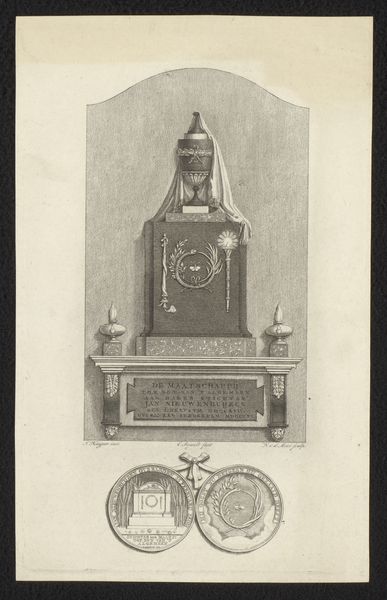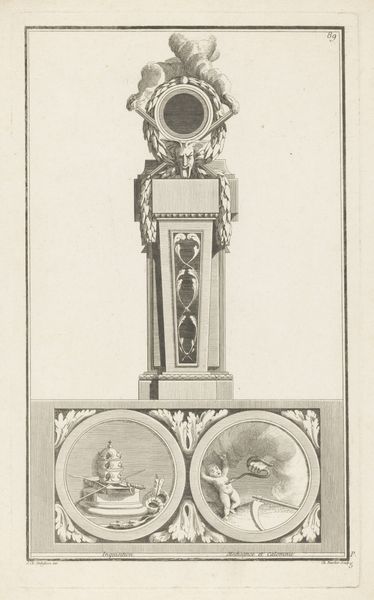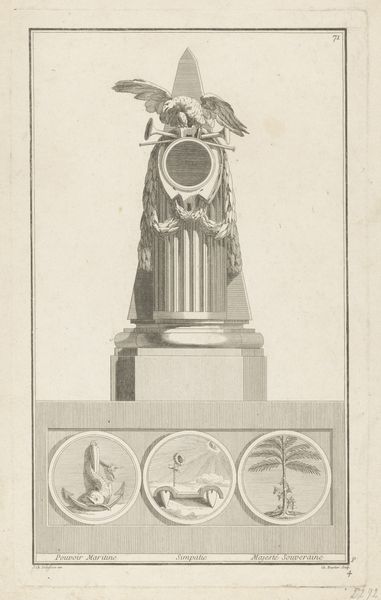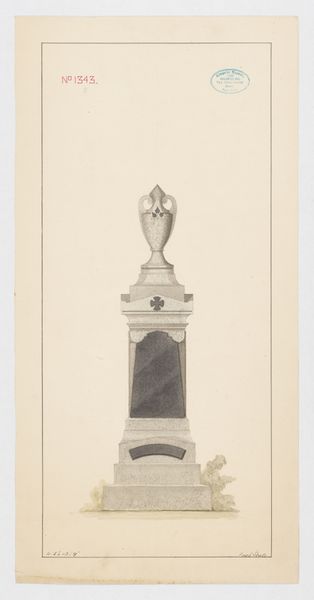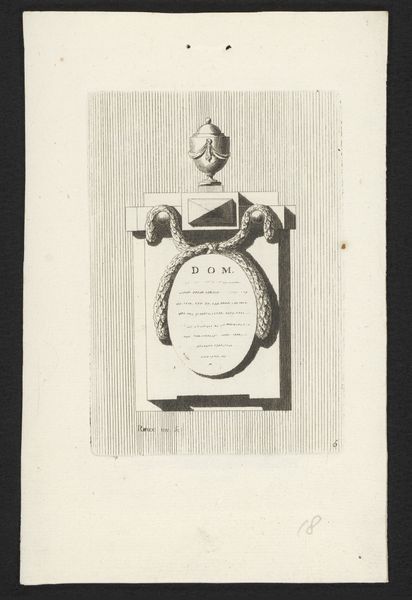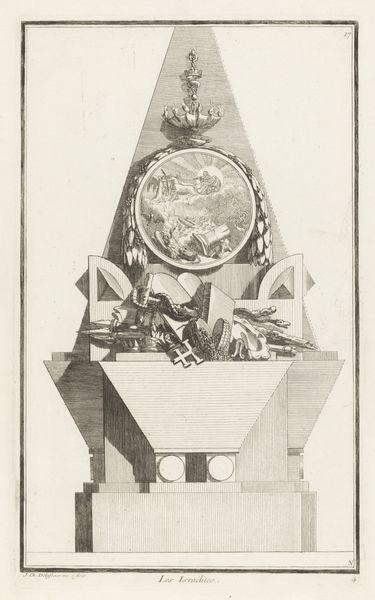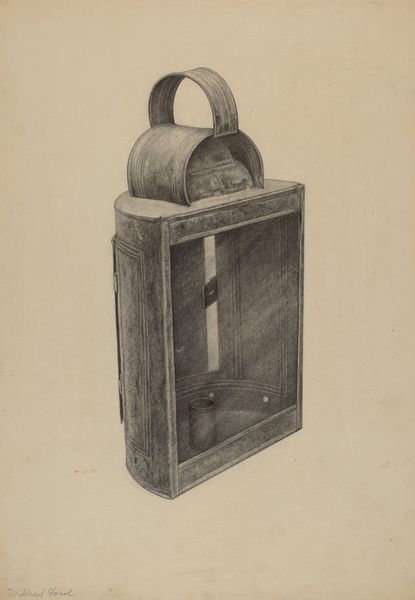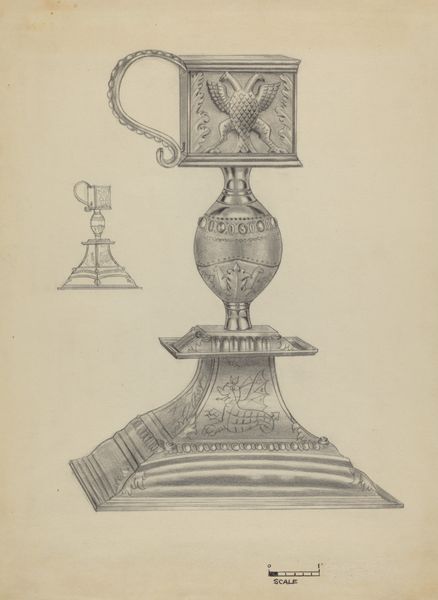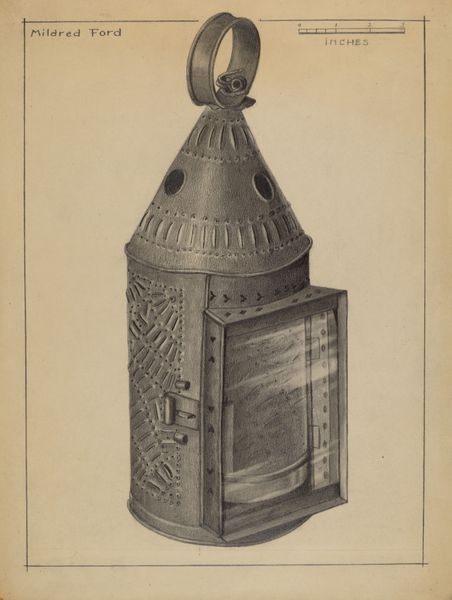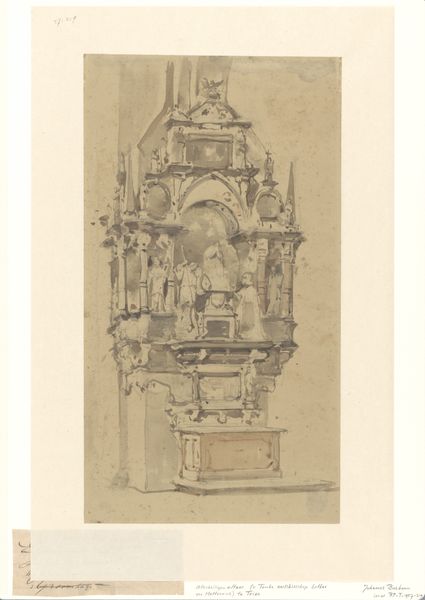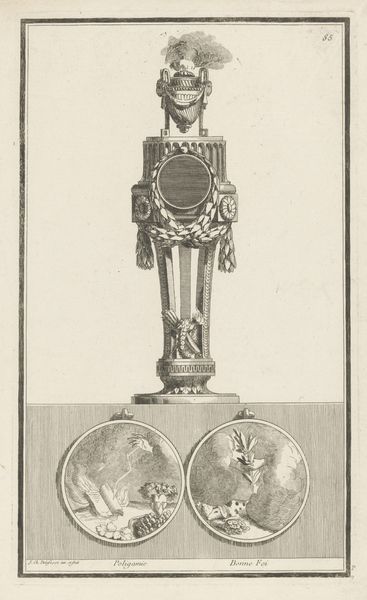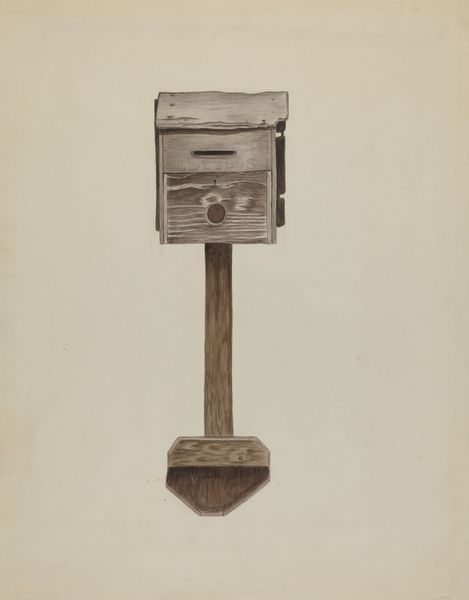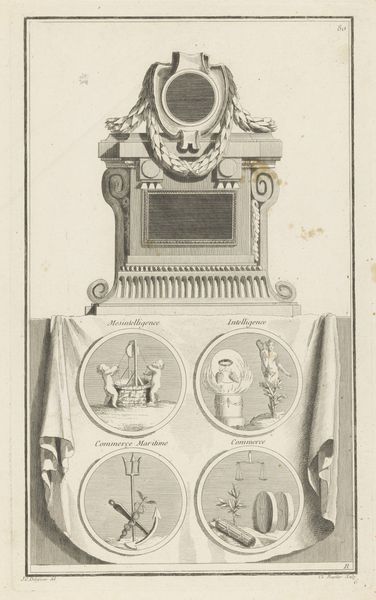
drawing, print, paper, ink, engraving
#
portrait
#
drawing
#
neoclacissism
#
allegory
# print
#
paper
#
form
#
ink
#
line
#
history-painting
#
engraving
#
realism
Dimensions: height 240 mm, width 145 mm
Copyright: Rijks Museum: Open Domain
Curator: This delicate print is titled "Gedenkteken voor Jan Nieuwenhuyzen," created between 1806 and 1808. Its maker was Noach van der Meer the Younger. The print is currently held in the Rijksmuseum collection. Editor: It strikes me as rather austere, doesn't it? The stark lines, the muted tones…it speaks to a certain restrained grief, almost clinical in its presentation. Curator: Indeed. This memorial portrait of Jan Nieuwenhuyzen must be situated within the social and political context of the late 18th and early 19th centuries, when Neoclassicism was prominent. The clean lines and somber presentation mirror the period's fascination with virtue and reason in the face of revolution. Editor: The symbolism is certainly rich. The urn, draped in fabric, atop a monument… very conventional signs of mourning. What about those emblems flanking the epitaph? Are those related to Nieuwenhuyzen's achievements? Curator: Precisely. These details speak volumes about Nieuwenhuyzen’s position in society and how the political climate contributed to the symbolic presentation of Jan Nieuwenhuyzen as a patriotic icon, while obscuring social injustices that prevailed during the Enlightenment and Dutch Patriot era. We could read this as the dawn of modern educational activism. Editor: So, those objects—the laurel wreath and fasces— are employed to construct a particular narrative around his persona and his contributions to his society. It does look to sanitize the realities. It serves as a potent example of how symbolic language can shape historical memory. The image’s purpose goes far beyond remembrance; it actively participates in the construction of national heroes, wouldn’t you say? Curator: I agree entirely. The emphasis on symbols like those serves as a stark reminder of how even mourning can be co-opted to serve political or ideological ends. Editor: Thinking about the dialogue between historical record and contemporary values makes me realize the many layers of history we bring to such a seemingly simple image. Curator: Yes, looking closely and asking what sociopolitical realities affected its commission and visual construction, ensures these older images don’t get fossilized.
Comments
No comments
Be the first to comment and join the conversation on the ultimate creative platform.
